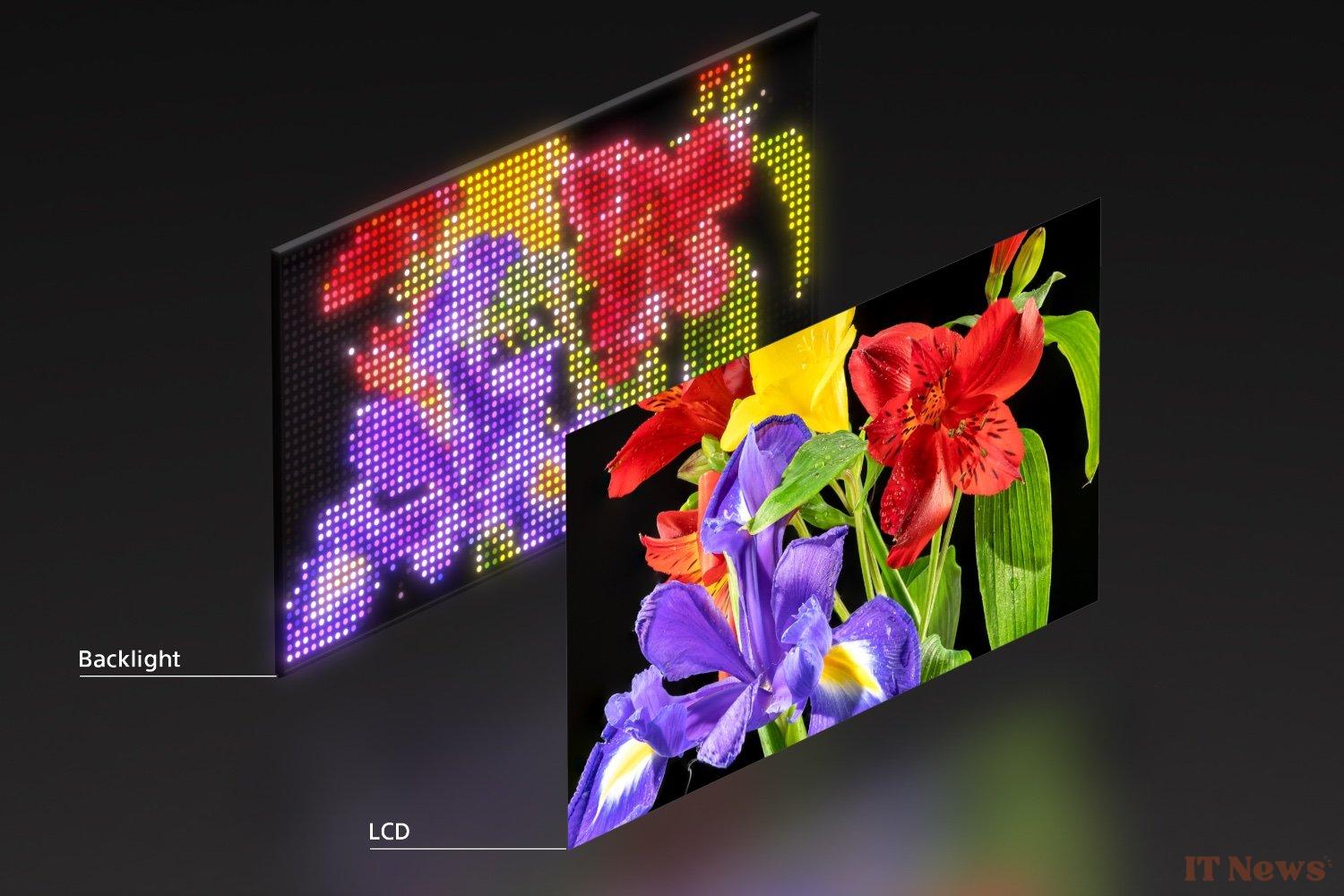Unlike conventional LED TVs, which use white LEDs to illuminate an LCD panel, RGB LED technology produces color directly at the source. This approach results in higher brightness and more vivid colors. At a demonstration in Tokyo, Sony showed off a prototype of its RGB LED display, compared to its current best mini-LED, the Bravia 9, and its A95L OLED TV. As a result, the RGB LED model displayed better color saturation and brightness. superior, although its blacks are not as deep as those of OLED.
Better brightness and more faithful colors
Furthermore, Sony announces that its future RGB LED TVs will be able to cover 99% of the DCI-P3 color space and around 90% of the BT.2020 standard, which represents a major advancement in color fidelity.
According to Sony engineers, one of the major challenges of this technology lies in managing the transition between the RGB LEDs and the color filters of the LCD panel. To ensure accurate reproduction of tones, the brand relies on its XR Color Booster processing engine, designed to maximize the precision of gradations and avoid loss of detail, especially in dark scenes.
One of the strengths of RGB LED technology is its improved performance outside the viewing axis. Conventional LED TVs often experience saturation and brightness loss when viewed from a different angle, a problem that Sony appears to have reduced thanks to a better screen cell structure and advanced control. colors.
Another advantage: the management of "blooming", this luminous halo that surrounds bright objects on a dark background, is significantly improved compared to traditional mini-LEDs. Sony has developed a backlight control algorithm that optimizes light diffusion and reduces these unwanted effects.
Finally, Sony collaborates with several technological partners such as MediaTek and Sanan Optoelectronics to optimize the performance of its RGB LED screens. Thanks to Through these alliances, the brand hopes to offer televisions offering excellent value for money, suitable for both cinema lovers and video game enthusiasts.
Sony plans to start production of its first RGB LED models in 2025, with commercialization expected in 2026. If this technology lives up to its promise, it could offer an interesting alternative to current OLED and mini-LED, particularly for consumers looking for large, affordable screens without compromising on image quality.



0 Comments